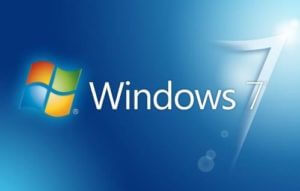An update released by Microsoft on Tuesday (09) has caused problems with machines running Windows 7. If your computer has been affected and does not restart, try some of the actions listed below. Microsoft has not offered any repair services so far, so if these tips do not make your system back active, it looks like the solution will really be to format your hard drive.

Important: None of the following suggested commands will damage your Windows 7.
Command prompt:
- Press F8 while Windows is starting;
- Choose the “Command Prompt” option;
- Type the command “dism.exe / image: C: \ /cleanup-image/revertpendingactions”
- Important: If Windows is on a partition other than “C:”, the letter should be replaced;
- Press “Enter”;
If the command listed above fails:
- Type the command “cd C:\windows\winsxs” and press “Enter”;
- Important: again, if Windows is and a partition other than “C:”, the letter should be changed.
- Enter the command “rename pending.xml pending.xml.bak”; and
- Press “Enter”;
Last valid configuration:
- Press F8 while Windows is starting; and
- Select the “Last Known Good Configuration” option.
System Restore:
- Press F8 while Windows is starting;
- Go to the option “Repair your computer”;
- Enter the system administrator password;
- Choose the option “System Restore”;
- Please check a date before the update is installed; and
- When you return to the previous screen, select “Startup Repair” and then restart your computer.
If “Repair your computer” does not appear:
- Press F8 while Windows is starting;
- Select “Command Prompt”;
- Enter the command “rstrui” and press “Enter”;
- Please check a date before the update is installed; and
- On the previous screen, select “Startup Repair” and restart the computer.
File Replacement:
- Important: If you do not have the file that should be replaced, download it here;
- On a computer that works, go to the “C:\Windows\System32\drivers” folder;
- Look for the file “ntfs.sys” and copy this file to a pendrive;
- Start the damaged system using the Linux LiveCD;
- Important: If you were unable to copy a ntfs.sys file from another computer, go to the “Windows\winsxs” folder and look for the “ntfs.sys” file in the subfolders. Grab the newest file you find and copy (CTRL + C);
- Navigate to the “drivers” folder mentioned above;
- Rename the file “ntfs.sys” to “ntfs.sys.bak”;
- Copy the file “ntfs.sys” from the working machine (which is on the pendrive) or paste the file copied from the “winsxs” subfolder to the damaged system;
- Important: If this does not work, boot the system from Linux, delete the copied “ntfs.sys” and rename “ntfs.sys.bak” to “ntfs.sys”. Then try another form of repair.
To prevent damage after Windows starts
- Go to the Control Panel and look for the Windows Update option;
- Click the updates and uncheck the box for update KB2823324.
Is your issue resolved? Leave your answers and suggestions in the comments!
Source: pc-mind.com